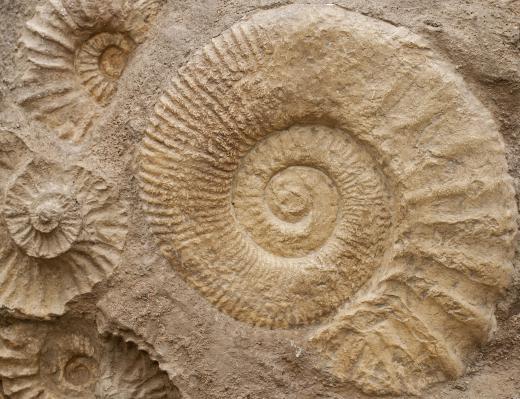What Was the Cambrian Period?
 Michael Anissimov
Michael Anissimov
The Cambrian period is a major division of geological time, extending from about 542 to 488 million years ago. It is the first period in the broader Paleozoic era. The Cambrian is characterized by the appearance of a wide range of complex, fossilizable multicellular organisms. Prior to this, multicellular organisms were more like simple colonies (sponges and medusoids) rather than differentiated animals.
In a period lasting about 10-20 million years during the beginning of the Cambrian period was an event called the Cambrian explosion, referring to the sudden emergence of numerous well-preserved animal fossils. During the Cambrian explosion, all the major body types emerged. The Cambrian periodis named after Cambria, an older name for Wales, where Cambrian-era fossils were first found.

The time prior to the Cambrian period is referred to as the Precambrian. For a long time it was thought that the Cambrian period signaled the emergence of multicellular fossils in general, but discoveries of the so-called Ediacaran biota in the past fifty years have proven that multicellular organisms existed prior to the Cambrian. However, these were not nearly as complex as their Cambrian descendants, to whom they have only tenuous connections. It was originally thought that no land plants existed during the Cambrian period, but molecular dating has shown this to be untrue, and there were in fact some primitive land plants as early as 700 million years ago, and land-dwelling fungi as long as 1000 million years ago. Many of these were simple mat or sheet-like organisms.
Many important species first emerged during the Cambrian period: trilobites, brachiopods, arthropods (water scorpions), and conodonts (the precursors to all vertebrates). Every modern animal phyla, except for the bryozoa, a phyla of reef-building organism, had a representative in the Cambrian.
The Cambrian period is the first geological area to be defined by the presence of certain fossils rather than an arbitrary time-based division. The beginning of the period is defined by the appearance of trilobites, and its ending occurs during the Cambrian-Ordovician extinction events, the first major extinction event of the Phanerozoic eon, a period of time encompassing 542 million years ago until today. This extinction event wiped out about half of all animal species.
The Cambrian period can be broken down into three distinct periods, each about 12 million years in length: the Early Cambrian, the Middle Cambrian, and the Furongian. After the Cambrian period came the Ordovician period.
AS FEATURED ON:
AS FEATURED ON:











Discuss this Article
Post your comments